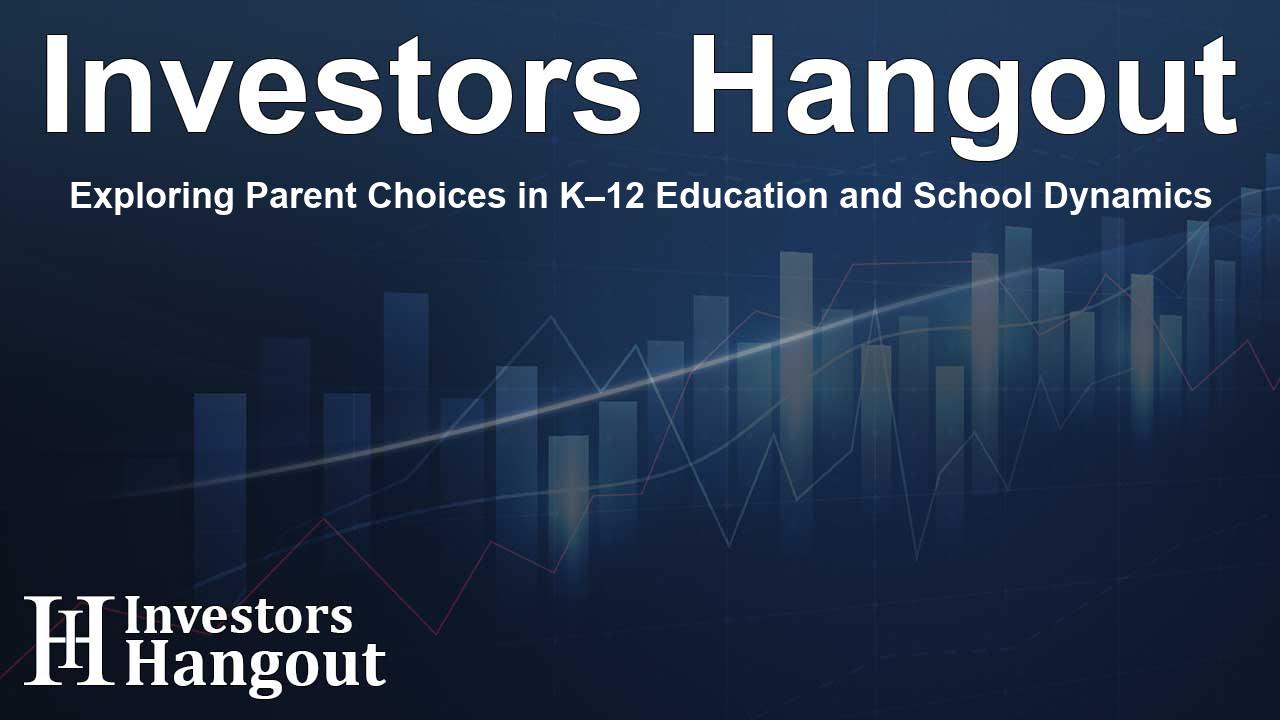Exploring Parent Choices in K–12 Education and School Dynamics

Transforming K–12 Education Through Parental Choices
Amidst changing educational landscapes, parents are increasingly taking the reins in choosing educational paths for their children. A recent report by Tyton Partners sheds light on this shift, emphasizing how parents are not merely reactive but actively seeking the best options for their children. This exploration into the K–12 system highlights the burgeoning trend of school choice, as a growing number of families opt for alternatives outside their local public districts.
Key Insights from the Recent Report
Tyton Partners released a pivotal report that dives deep into the motivations and behaviors of today’s parents in the education system. Surveying over 1,600 parents who have navigated school changes reveals a plethora of insights about what drives school choice. Their commitment to finding suitable learning environments illustrates a notable change in how education is perceived—now seen as a profoundly personal decision.
Shifting Enrollment Patterns
One of the most striking findings is that nearly 25% of families currently have at least one child enrolled in a school other than their local public district. This statistic hints at a significant trend where parents are not just waiting for a crisis to motivate change but are proactively seeking personalized educational experiences.
Safety and Relevance as Driving Factors
Safety is a critical concern for families today, with many parents citing it as one of the top reasons for switching schools. While this may seem alarming, it also speaks to a heightened awareness around the importance of a secure learning environment. Moreover, parents are increasingly drawn toward schools that offer real-world learning experiences, which they find relevant and beneficial for their children's future.
Exploring Alternative Learning Environments
In recent years, alternate learning models such as homeschooling and virtual schooling have gained popularity among parents looking for stability. The report highlights that families opting for these home-based educational models report a higher satisfaction rate. They feel less pressure to switch again, suggesting that these alternatives may align more closely with their educational values and needs.
Frequent Switching Indicates Unmet Needs
Notably, the report indicates that 40% of the surveyed activated parents are planning to change schools again soon. This statistic points to a gap between what families desire and the educational options currently available to them. It’s clear that there is a growing demand for schools that resonate not only with academic goals but also with the values and safety concerns of parents.
Lack of Support in Decision Making
Despite the increasing interest in educational navigators—resources that help parents make informed choices—many families still rely heavily on personal networks for guidance. Surprisingly, only 43% of parents reported using a navigator, showcasing a significant opportunity for improvement in how families can be supported in their decision-making process about school choices.
Call to Action for Stakeholders
The findings from the Tyton Partners report represent an urgent call to action for educational providers, policymakers, and investors. To truly address and meet the needs of modern families, there is a clear necessity for investments in educational models and systems that prioritize safety, value alignment, and personalized experiences. Quality support systems are crucial to making meaningful school choice a reality.
Frequently Asked Questions
What is the main focus of the Tyton Partners report?
The report focuses on how evolving parent preferences and increased school choice policies are impacting decisions in K–12 education.
How many parents participated in the Tyton Partners survey?
Over 1,600 parents participated in the survey, providing valuable insights into the dynamics of school choice.
What percentage of families are enrolling children outside public districts?
Nearly 25% of families enroll at least one child outside their local public district, indicating a significant trend towards educational alternatives.
Why do parents switch schools for their children?
Parents cite school safety and the desire for relevant, real-world learning experiences as top reasons for switching schools.
How can educational stakeholders meet the needs of families?
Investing in models that prioritize safety, values, and personalized learning, along with improving decision-support systems, is crucial for stakeholders.
About The Author
Contact Caleb Price privately here. Or send an email with ATTN: Caleb Price as the subject to contact@investorshangout.com.
About Investors Hangout
Investors Hangout is a leading online stock forum for financial discussion and learning, offering a wide range of free tools and resources. It draws in traders of all levels, who exchange market knowledge, investigate trading tactics, and keep an eye on industry developments in real time. Featuring financial articles, stock message boards, quotes, charts, company profiles, and live news updates. Through cooperative learning and a wealth of informational resources, it helps users from novices creating their first portfolios to experts honing their techniques. Join Investors Hangout today: https://investorshangout.com/
The content of this article is based on factual, publicly available information and does not represent legal, financial, or investment advice. Investors Hangout does not offer financial advice, and the author is not a licensed financial advisor. Consult a qualified advisor before making any financial or investment decisions based on this article. This article should not be considered advice to purchase, sell, or hold any securities or other investments. If any of the material provided here is inaccurate, please contact us for corrections.
